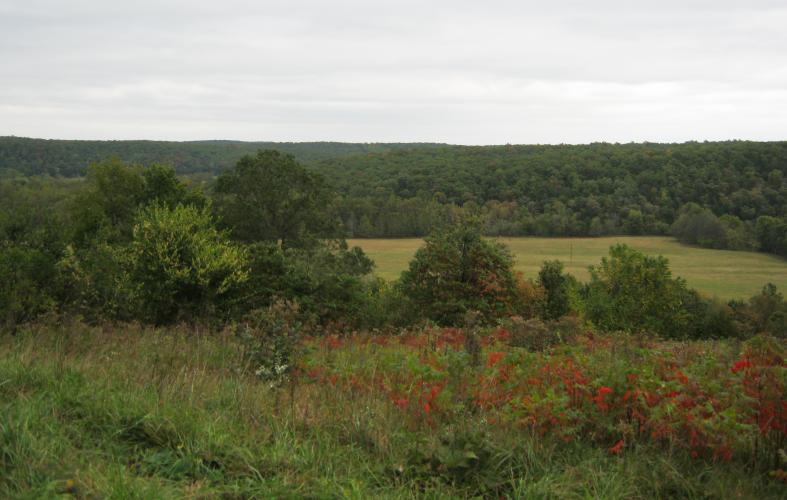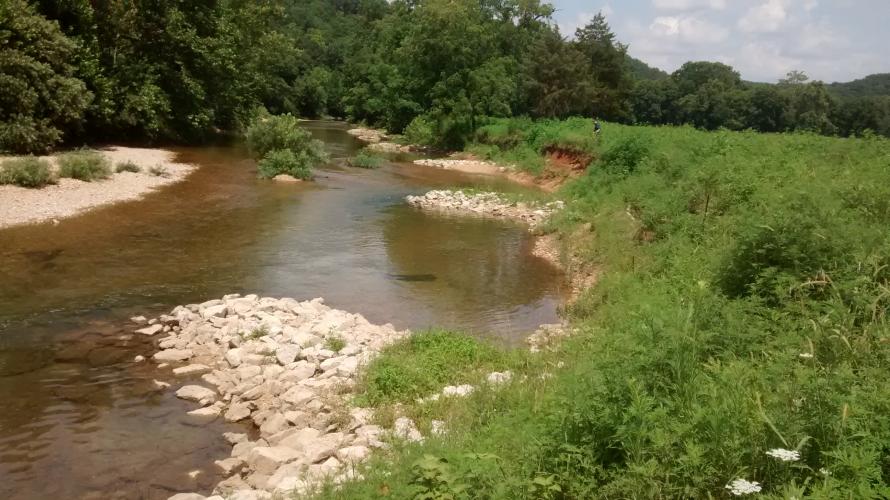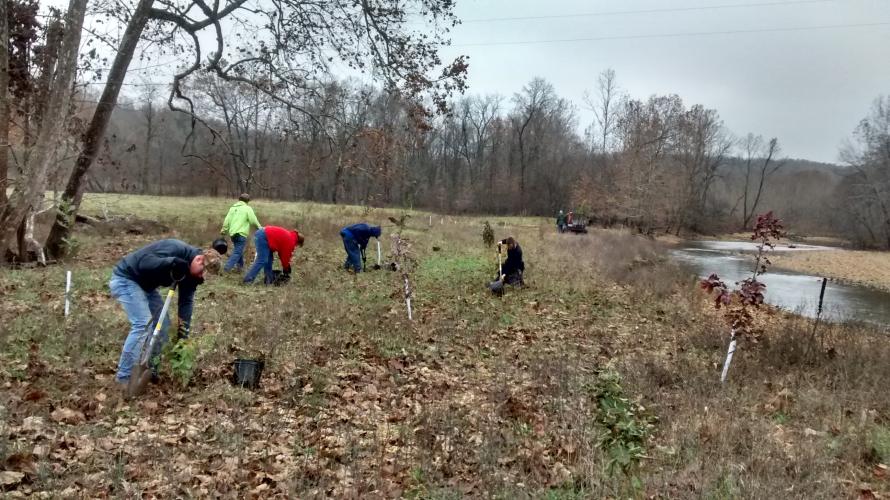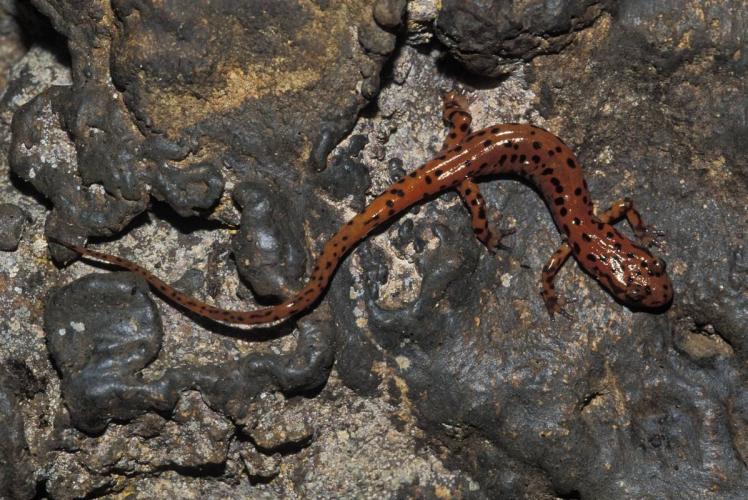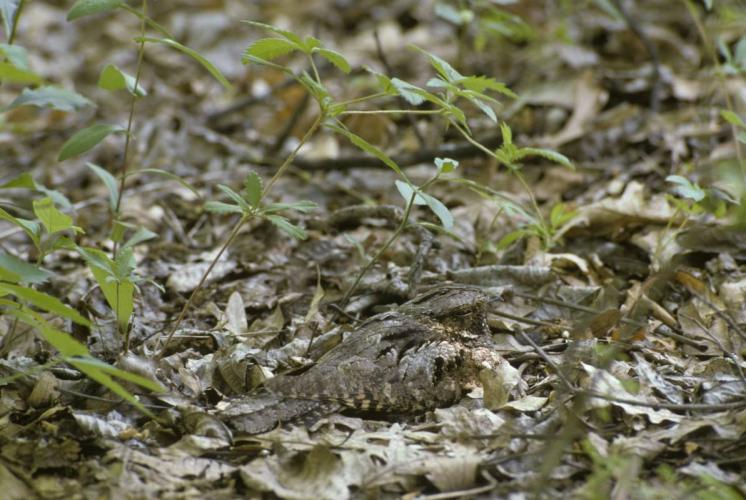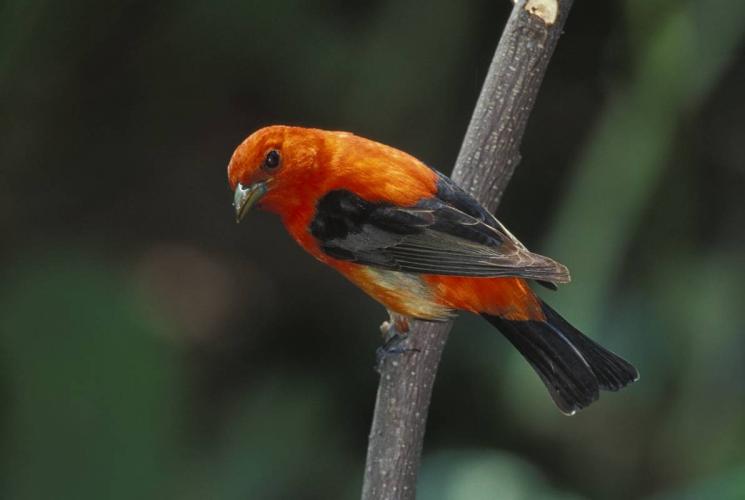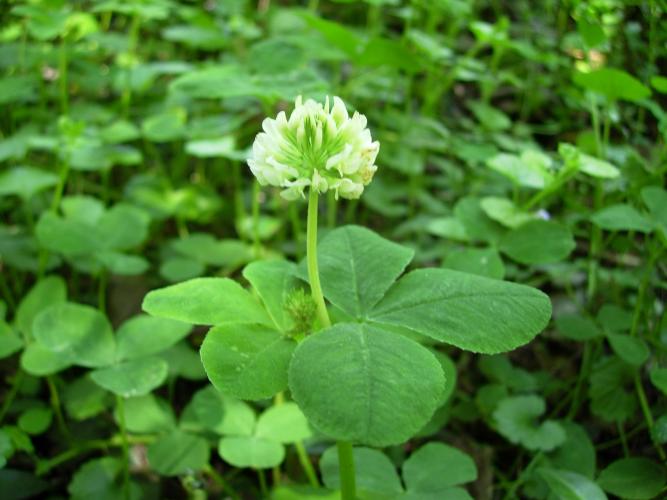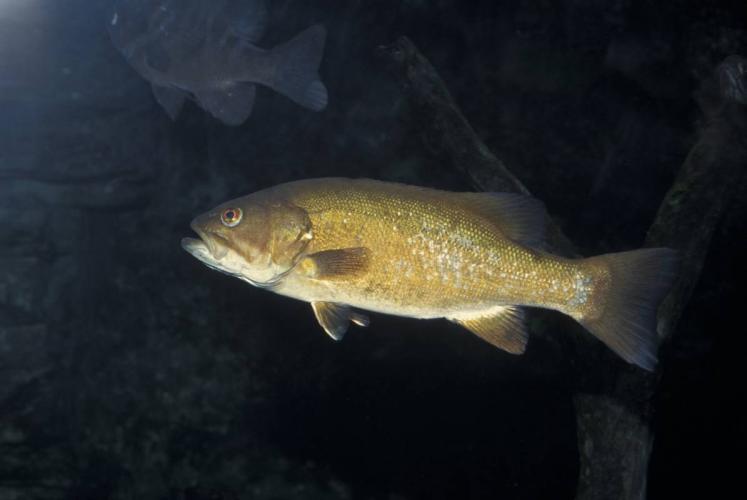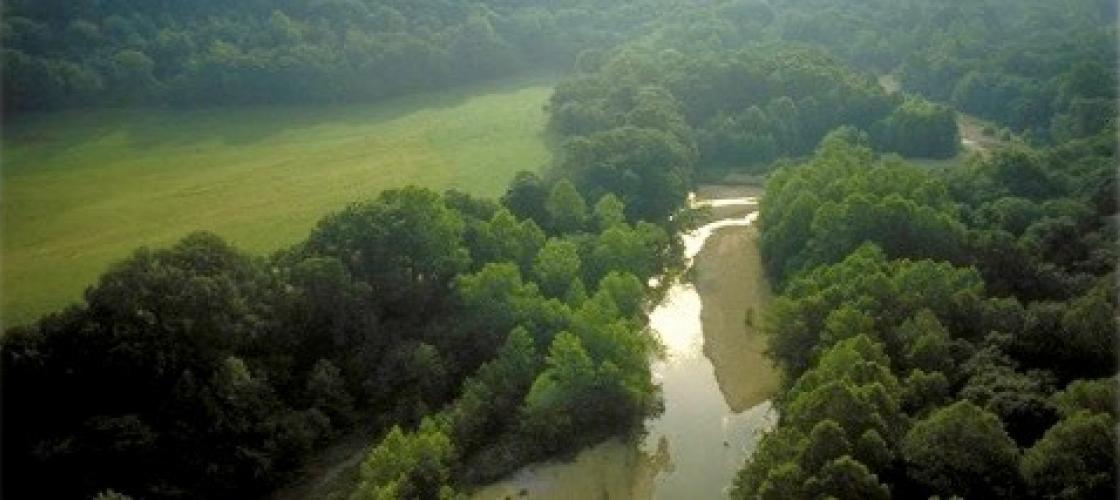The Huzzah/Shoal Creeks region, with its rolling hills, crystal-clear spring-fed streams, and rugged forested terrain, is one of the most biologically intact and functioning landscapes within the Meramec Basin.
In addition to its rich plant and animal life, the region is a working landscape that produces timber products, cattle, and hay. It also offers many outdoor activities, such as floating, hiking, fishing, hunting, and nature viewing, within 70 miles of St. Louis.
The area is just over 190,000 acres with forests and woodlands covering about 85 percent of the landscape, followed by grasslands (mostly in the creek bottoms). Private land makes up about two-thirds of the geography; public land covers the rest.
Contact our St. Louis Regional Office to speak with a member of our team.
MDC staff can provide:
- Cost-share information
- Lists of contractors
- Guidance for timber sale administration
- Guidance on grazing and pasture management
- Advice for sustainably growing and harvesting timber
- Step-by-step recommendations for improving wildlife habitat
Title
What Conservation Practices Could Benefit Me?
MDC’s aim in priority geographies is to find common sense solutions to meet the goals of local landowners while balancing the needs of nature. Our staff and conservation partners will work with you to match your property goals with conservation practices that fit your needs. In the Huzzah/Shoal Creeks area, these practices may include:
- Streambank stabilization and reinforced stream crossings
- Livestock watering systems
- Tree and shrub planting
- Invasive species removal or control
- Fencing to protect sensitive areas from livestock
- Timber stand improvement
- Native grass and wildflower seeding
Title
How Will The Area Benefit From Conservation Efforts?
- Better protection against streambank erosion
- Reduced deposits of gravel in bottomlands
- Quality timber production
- Attractive scenery
- Improved habitat that benefits songbirds, pollinator insects, and other animals such as deer and turkeys
- Increased forage quality and hay production for livestock
Title
What Species Will Be Helped?
Quality habitat will benefit all native plants and animals. Species of interest within the Huzzah/Shoal creeks area, and mussels immediately downstream from the Huzzah Creek and Meramec River confluence, include:
- Birds: scarlet tanager, whip-poor-will, prairie warbler, pine warbler, cerulean warbler, yellow-breasted chat
- Amphibians and reptiles: grotto salamander, cave salamander, eastern hognose snake
- Mammals: Indiana bat* **, gray bat* **, eastern wood rat, long-tailed weasel, golden mouse
- Insects: threatened native bees and butterflies, other pollinators, skillet clubtail dragonfly, Ozark emerald dragonfly, Hine’s emerald dragonfly**, Barr’s cave springtail
- Mussels and snails: Arkansas brokenray, spectaclecase* **, sheepnose* **, elk toe, black sandshell, cherrystone snail
- Fish: smallmouth bass, rock bass, freshwater drum, logperch
- Plants: rigid sedge, netted chain fern, running buffalo clover* **, eastern blazing star, prairie iris, sterile sedge, Turk’s cap lily, Riddell’s goldenrod
C = species of conservation concern, * = state endangered, ** = federally endangered
